Adam Jones Captured a Unique Photo of This Divebombing Barn Swallow
“Be open the awe and wonder of the natural world you live in, and you will never run out of subjects to photograph,” says photographer Adam Jones. Residing in Kentucky and shooting professionally for over four decades, Adam has encountered many wildlife subjects and scenarios during his career. However, even he couldn’t have expected the kind of hostility he met while trying to snap a barn swallow on his porch.
Want to get your work featured? Here’s how to do it!
Barn Swallows tend to have a love-hate relationship with human beings. One particular barn swallow was even more aggressive than hate when Adam Jones attempted to photograph it. This critter decided he didn’t like the look of Adam’s camera and proceeded to divebomb him repeatedly. Luckily, the gear (and Adam) emerged unscathed from the incident. Plus he got himself a crisp image of the bird that went viral online some weeks ago. It also reinforced his belief in the AF tracking system of the Canon mirrorless R5 and R6 cameras.
The Essential Photo Gear Used by Adam Jones
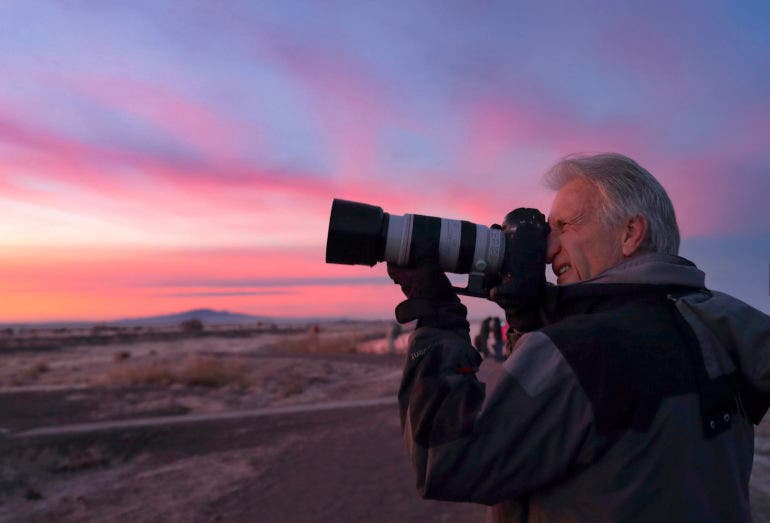
Adam told us:
I’m honored to be sponsored as a Canon Explorer of Light. My go to camera body today is the Canon R5 which I find to be amazingly capable in a wide array of situations. High resolution for great detailed images and fast and nimble enough for fast moving action and wildlife. The eye tracking focus is simply amazing, the best in the business for wildlife.
The Phoblographer: Please tell us about yourself and how you got into photography. What genre of photography do you most enjoy?
Adam Jones: My love for photography began 43 years ago when I borrowed my brother’s Pentax Spotmatic to go on my honeymoon in Hawaii. Photographing flora and fauna in Hawaii got sparked my interest in photography. I always loved the great outdoors, and photography gave me a new way to experience and appreciate the natural world. My first professional quality images were underwater images from various dive trips around Hawaii, Florida, and the Caribbean. Early on, we didn’t have a lot of money to spend on camera gear, so I bought plans and built my own underwater camera housings to enclose a Pentax LX with a large sport finder. Living in the Midwest, it was difficult to create enough images to make a living solely with underwater photography, thus began the migration toward more land-based photography. In the early days, this meant going to National Parks while on vacation away from my day job. Landscapes were my first passion, created largely for the calendar market and paper products industries. Eventually, I branched out to include more macro and wildlife as I acquired the right camera gear for doing so.
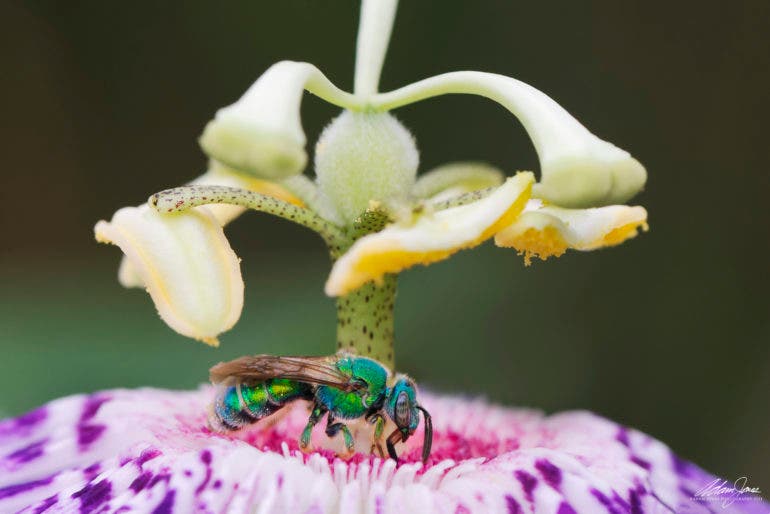
Today, I’ve been a full-time pro photographer for nearly 30 years. I’m primarily known for nature, wildlife, and travel images. Currently, my filming is concentrated mostly on wildlife, general nature, and landscapes. I still enjoy travel photography but have been doing less of that in recent years. I enjoy a wide array of nature subjects, landscapes and all types of wildlife: Birds, Mammals, Reptiles, Insects, intimate landscapes, patterns, etc.

The Phoblographer: The image of the divebombing swallow went viral on Reddit, vk, and was trending on Twitter for a while too. Did you expect it to become this popular?
Adam Jones: I had no idea this image would go viral on the internet, but very happy so many liked and commented on the image. The image was captured with the R5 and 100-500 lens at just over 100mm. The bird was literally about 4 ft in front of the camera, diving right at me and then turning away at the last second. The divebombing threats went on for the full time I stood on the porch. The R5 had a great success rate with a high percentage of images with spot-on focus. Truly, the biggest challenge was keeping the fast-flying small birds framed in the viewfinder. I was surprised the R5, and 100-500 could focus fast enough with the subject traveling so fast and so close to the lens. It is much more difficult for the lens/camera combination to keep the focus on target when the subject is very close. My settings for this image were: ISO 1600, F8, 1/4000th sec. 123mm handheld for maximum speed in following the subject.
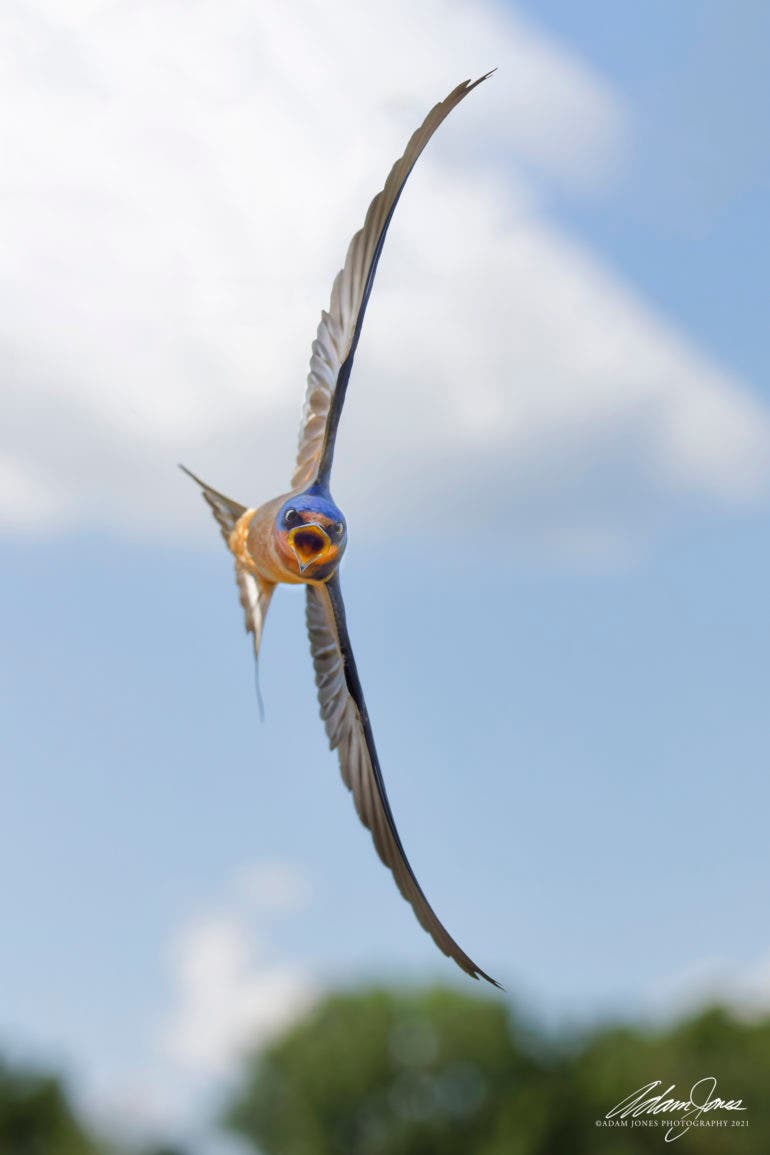
The Phoblographer: Tell us about the story behind that capture. Did the swallow come swooping at you a few more times after this click?
Adam Jones: Over the past five to six years, a pair of barn swallows builds a nest on the backside of a stone arch above the steps to our front porch. It’s a perfect location, completely under the roof, safe, and out of the weather. My wife first noticed the birds’ aggressive behavior when she exited our front door going to the mailbox. Each day as the nest building began, she would be dive-bombed repeatedly all the way out to the mailbox at the end of our driveway. The pair of birds would zoom right at her head, going to and from the mailbox. I had just received a brand-new RF 100-500 f4.5-7.1 Canon lens and thought the dive-bombing birds would be an impossible challenge for the AF system. As it turns out, the tiny birds were so fast, my ability to keep the birds in the viewfinder was the limiting factor. I switched to electronic shutter on the R5 for the fastest capture rate of 20fps and shot several hundred images very quickly.
The angry barn swallow was captured while positioned on my front porch and repeatedly getting dive-bombed. When reviewing the images on a computer, I was stunned at how many were perfectly focused, even if they were way out of center; the eye-tracking autofocus followed the birds to the very edge of the viewfinder. Upon review, I was very pleased to see the male barn swallow had his mouth open in a very expressive way. I simply did not see that at the time of capture. The image was captured around noon, and the lighting was very harsh. The way the sun tracks the front of our home, the lighting is never ideal. During post-processing, I brightened the shadowed front side of the subject. The dynamic range of the R5 is to be commended; the shadows brightened up clean and noise-free, even though quite a bit underexposed. Older DSLR cameras often don’t do as well when brightening the shadows in post-processing.
The Phoblographer: Are the swallows still living around your porch (and hopefully less hostile now)?
Adam Jones: This shoot was a one-time outing. The birds finished building the nest and laid their eggs over the next week. Once the eggs hatched, we did our best to not stress the birds by restricting our access to the front porch. I’m happy to say the eggs hatched; they all fledged successfully.
The Phoblographer: Was the Canon R5’s autofocus tracking good enough to keep up? Does the addition of a teleconverter slow it down?
Adam Jones: The addition of a 1.4x extender on the 100-500 does not seem to slow the autofocus at all, and the optical quality with the 1.4x extender is superb. The AF response on the R5 and R6 is better than any DSLR that I’ve owned, and this includes the 1DX Mark III. The AF response is in no way slower than DSLRs.
I have used Canon cameras for 25 years now, and I’m very happy with the layout, controls, and menu system offered in their cameras. Canon offers a comprehensive camera system and features easy menu customization, so the camera works the way I want. The camera becomes an extension of me, not forcing me to do awkward things to make changes to the way the camera works or to change settings.
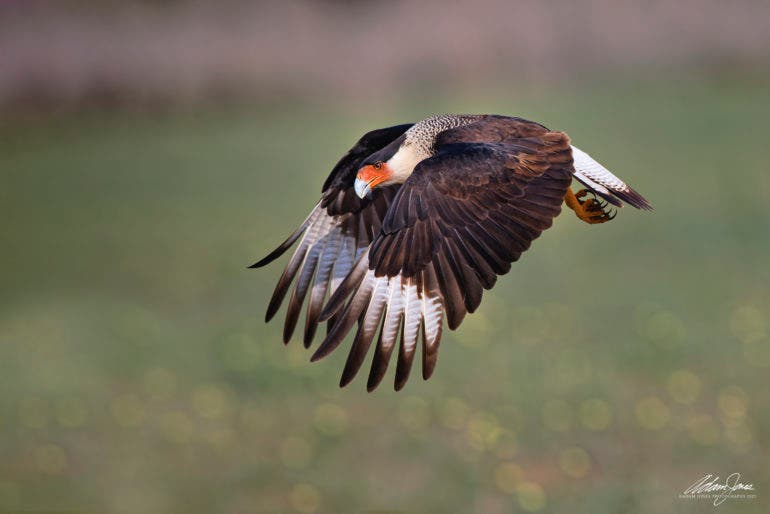
The Phoblographer: Many amateur photographers still prefer the AF response of DSLRs over mirrorless cameras. Does the latter have some catching up to do, or is it just a question of training oneself to use mirrorless focus modes better?
Adam Jones: Some of the earliest mirrorless cameras were a bit sluggish in their autofocus response. This is no longer the case with mid-range and professional mirrorless cameras today. Another important consideration is that mirrorless cameras no longer require any micro-adjustment to the AF system to obtain perfect focus. Mirrorless cameras focus right off the sensor for much more accurate and consistent autofocus. The bright, beautiful electronic viewfinders are amazing in low light conditions, especially compared to traditional DSLR cameras. Once I was in Yellowstone looking across a foggy meadow before the sunrise. I could not see much in the dim light with my eyes, but looking at the scene through the electronic viewfinder, I could see two elk lying down in the grass that my eyes could not see.
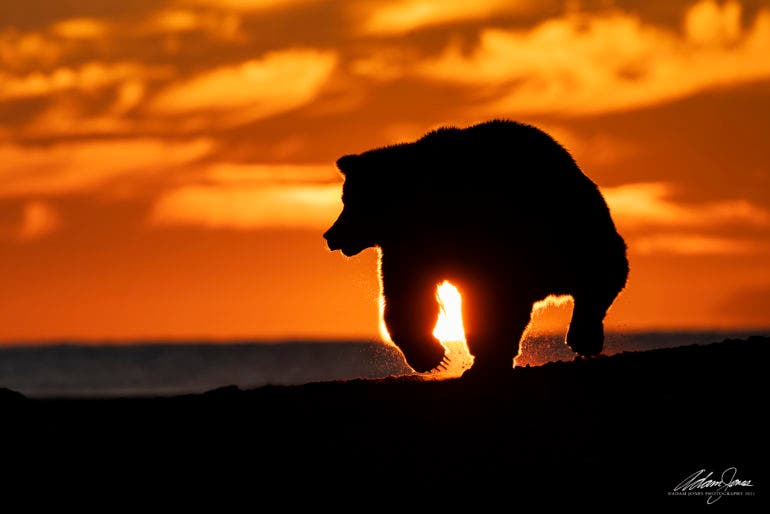
It’s all very intuitive, with a short learning curve. I’ve gone totally mirrorless regarding camera bodies. I’m still using my older EF lenses for now, the exception being the 100-500 which I find hard to beat for overall versatility in this focal range.
The Phoblographer: “Good images are wherever you find them.” This is a self explanatory quote by you, but what suggestions do you have for our readers to help spot such images more easily? How can they train themselves better to spot a potentially good image?
Adam Jones: Spotting good images is truly all about being open to the various possibilities going on around us all the time. We tend to get into a rut creating the same kind of images over and over until our brains are numb. Teaching workshops, I’ve gained some interesting insight from my students, who often see things differently. Be open to the awe and wonder of the natural world you live in, and you will never run out of subjects to photograph. The learning in my workshops really does go both ways. Participants learn from me, and I learn from them as well.
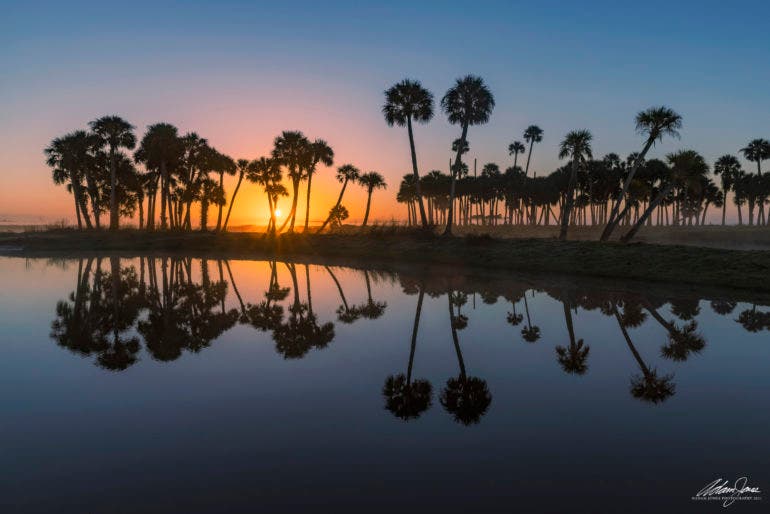
The Phoblographer: What are some of your favourite avian species to photograph and why? Is there an elusive bird species that’s on the top of your list to capture in the future?
Adam Jones: I enjoy photographing beautiful graphic subjects; this includes very colorful and expressive birds. If it’s colorful, I enjoy photographing it. I filmed male painted buntings in flight during my Texas bird workshop in the spring, along with many other species. The crazy colors of the male painted bunting are very appealing to me. Birds are special since they can fly, so images of birds in flight are especially appealing, such as the crested caracara, also from my Texas workshop in April.
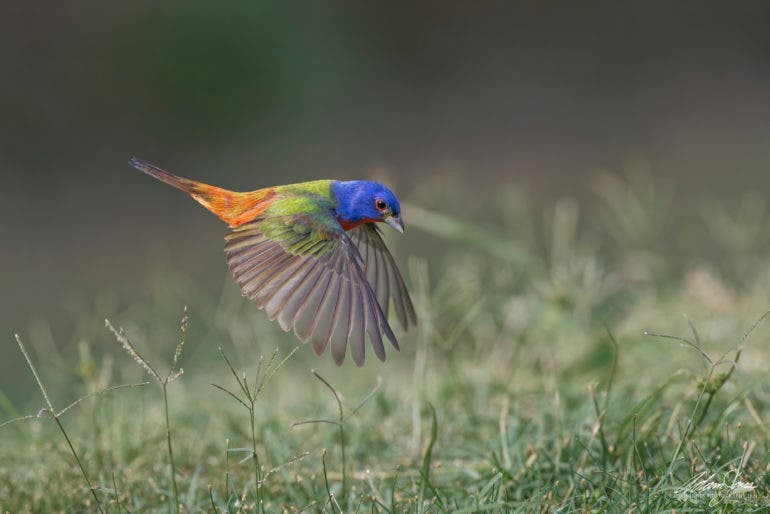
The Phoblographer: When you’re not shooting, traveling, tutoring, or writing books, what do you enjoy doing?
Adam Jones: I enjoy dancing. My wife and I are avid Argentine Tango dancers as well as ballroom dancing too. We’ve traveled to Argentina for a week of tango dancing at the local milongas in Buenos Aires.
All images by Adam Jones. Used with permission. Check out his website, Facebook, and Instagram pages to see more of his work.